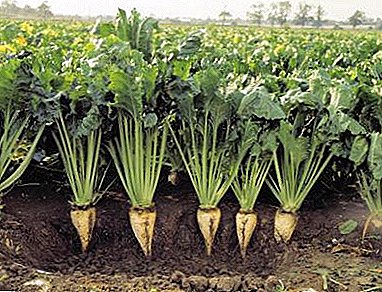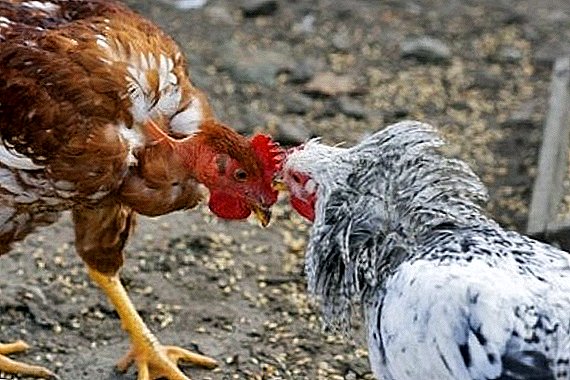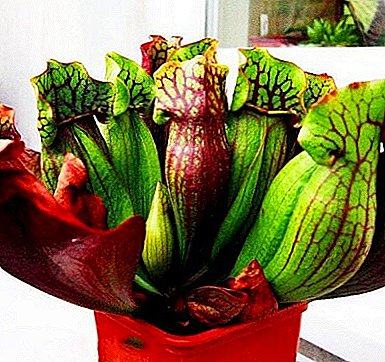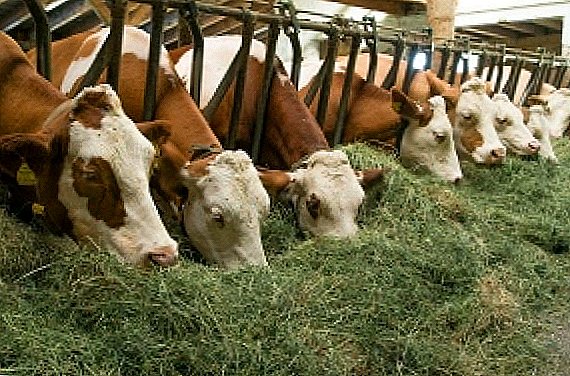
Today, in almost every village in the household there is a cow, and sometimes - not one.
People breed this animal due to their high productivity, that is, the content of the cow pays off due to milk and meat.
But you can often encounter such a situation when the animal began to "wither."
Most often, it is a symptom of a disease, such as leukemia.
This disease has its own characteristics, therefore, if you want to detect a disease in time, cure your animal or protect all cattle, then this information will be extremely useful for you.
Leukemia is a chronic infectious disease.that affects the blood-forming organs.
As the disease progresses, the cells of the organs that perform the hematopoietic function grow and mature poorly, as a result of which more lymphocytes are released into the blood. Sometimes leukemia ends with the formation of tumors in the organs of the cow, as well as a holistic damage to the tissues of the whole organism.
Not only cattle are ill with leukemia, but also pigs, horses and even humans. The disease was first identified at the end of the 19th century. Since then, the world has known terms such as leukemia, leukemia, blood cancer. By all these diseases is meant one infection - leukemia.

The causative agent of leukemia is an RNA-containing virus, which belongs to group C (oncoviruses). The bovine leukemic virus is similar in morphological properties to the pathogens of the same disease in other members of the animal world, but differences are observed at the level of the antigenic structure.
Despite the consequences that this virus may cause, its resistance to environmental factors below average.
Under conditions of a cell already at a temperature of 60 ° C, this oncovirus will not live longer than a minute, and under conditions of 100 ° C temperature the death occurs instantly.
Disinfection can be performed using caustic soda solution with a concentration of 2-3%. You can also neutralize the virus with a 3% formaldehyde solution or a chlorine solution of 2%.
In milk, this "pest" will die during boiling or in the process of souring.
Leukemia can develop in the body of an animal for a very long time without having a special effect on the general condition of the cow. This is because the pathogen in a cell can be very long bound to its genome.
A lesion occurs at the moment when the metabolic rate decreases or the immune barrier of the animal deteriorates.
The dependence between the age of the cows and the percentage of infected heads can not be traced, then on average 4-8 year old animals get sick more often.
Scientists also note that for some reason, animals are more susceptible to infection in red or black-and-white colors. This virus can infect not only representatives of cattle, but also goats, sheep.

Healthy animals can become infected only from a large representative of cattle. When a cow is in the first stage of the disease, then this oncovirus can be found in milk and colostrum.
Saliva may also contain a small percentage of infected cells.
If we consider the mechanism of transmission of the virus, then within the herd there are 2 types of mechanism - this is the vertical transmission through milk, the placenta and colostrum and the horizontal transmission.
I.e, calves may be born already infected (this is prenatal infection), and adult cattle can become infected by a carrier when they are kept together (this is a postnatal infection).
It is also interesting to read about milking a cow.
The latter case requires research, since it is still not completely known whether healthy animals can become infected with leukemia through common utilities (feeders, drinkers) or through blood-sucking insects that could bite a sick cow.
Animals may be susceptible to leukemia infection, with genotype and phenotypic predisposition being isolated.
Environmental factors can not affect infection, in particular, changes in the seasons, climatic conditions or geographical features do not affect the process of transmission of the virus. The main factor that influences the spread of the virus is the manure of young stock of those farms where they do not carefully follow the procedure for checking cows for leukemia.

Leukemia is mostly latent, that is, the pathogen is activated under the influence of certain factors and leads to abnormalities in the blood-forming organs.
Externally, the sick animal is no different from healthy. It is possible to identify the disease by means of a blood test, which will show violations in the differentiation of cells and their division.
Leukemia acts in such a way that the leukoblastic cells begin to divide intensively in the blood-forming organs, spleen, lymph nodes and bone marrow. These uncontrolled cells spread throughout the body of the animal and with a blood flow reach all organs and tissues.
In this way, tumors are formed that change the structure and disrupt the functioning of the organs that have fallen under the infection, by acting on specific cells (they atrophy).
All molecular, cellular and organ processes are impaired, which is a cause of disturbances in the hematopoietic process and an increase in the number of lymphocytes.
As long as there is no change in peripheral blood, the stage of development of the disease will be considered incubation. When infected as an experiment, the duration of this period is 60 - 750 days, and for uncontrolled infection - from 2 to 6 years.
The whole process of leukemia is divided into stages: preleukemic, initial, developed and terminal. As the disease progresses, the stages replace each other in sequence.
The diagnosis in the pre-leukemia stage can only be made after conducting virological tests.

When leukemia enters the initial stage, changes (quantitative and qualitative) in the composition of blood cells will be noticeable. An increase in the number of leukocytes, an increase in the percentage of lymphocytes is noted. Also in the blood appear immature, undifferentiated cells that are irregular in shape and all of different sizes.
During leukemia in the developed stage, clinical signs of the disease appear. The animal begins to feel worse, gets tired quickly, the assimilation of feed proceeds worse, the amount of milk given is reduced.
In general, there is a general depletion of the body against the background of deterioration of the digestive system. Lymph nodes, liver and spleen increase in size, and bumps appear on the skin that indicate the presence of a tumor.
When leukemia reaches the terminal stage, the pathological process is accelerated. Non-specific signs become very noticeable. This stage ends with a complete blockage of the animal's immune system, which leads to death.
Young animals, due to a partially strengthened defense system, are susceptible to faster leukemia infection, which causes faster death. Basically, in the young the rupture of the spleen occurs, so the animal may die abruptly.
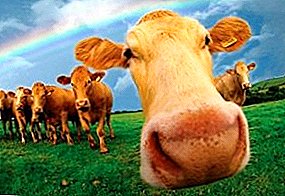
Diagnosis is possible only after special studies. Cure leukemia is impossible, you can only protect other animals from infection.
The first thing to do is to examine cows over 2 years old each year for the presence of a virus in their body. It is necessary to carry out the analysis once a year.
In the case of bulls, which are used for fertilization, research should be carried out 2 times a year. Until such time as the tests are ready, no foreign cows can be introduced into the herd.
If there are more than two large animals in the herd, then they should be removed from the herd and replaced with healthy heads.
In subsequent periods, for the breeding of offspring, you need to take the cows from the most prosperous farms and cross them with the most prosperous leukemia bulls. After the sick animals have been removed from the herd, the whole room must be disinfected with caustic soda in a solution of 2-3% concentration.
If all the research on leukemia is done in time, it will not be as difficult to identify and cure your cows as it may seem. Just care for your cows, not only in terms of regular feeding, but also in terms of checking the general condition. May your cows be healthy!






